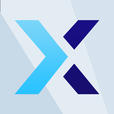Imagine walking into a trading room where the goal isn’t to chase quick profits or take reckless bets but to evaluate and manage risk from the get-go. That’s essentially what no-challenge programs in proprietary trading are doing—building an environment where risk assessment is baked into the DNA of the process. In an era where trading platforms are evolving fast and new assets like crypto and decentralized finance are shaking things up, understanding how these programs evaluate risk becomes not just interesting but essential.
Most traders think risk assessment is just about number crunching or setting stop-loss orders. But in prop trading, especially with no-challenge programs, it’s a holistic approach that’s embedded into the system. These programs aim to filter out impulsive or overly risky behavior before it even begins, helping traders focus on sustainable growth.
No-challenge programs are designed to be a safer, more disciplined alternative in an environment that’s often characterized by high volatility and unpredictable market moves. They’re not about eliminating all risks—that’s impossible—but about understanding, managing, and controlling them effectively. With markets shifting toward decentralized finance, AI-driven trading, and multiple asset classes, these risk assessment processes adapt at a pace faster than ever.
Before traders even get the green light, these programs run comprehensive checks on trading behavior, financial health, and experience. Think of it as a gatekeeper—making sure traders know what they’re doing before risking capital. For example, if a trader’s history shows impulsivity or inability to stick to risk parameters, the system might block or flag their activity.
This isn’t just a bureaucratic step; it’s akin to a pilot checking weather conditions before takeoff. A recent case involved a crypto prop firm that used sophisticated algorithms to assess participants’ trading patterns—those with a history of over-leverage or reckless trades were either restricted or put on a probation period.
Once trading begins, no-challenge programs don’t take obedience for granted—they continuously monitor everything. Algorithms flag unusual activities like abrupt position sizing, sudden large trades, or divergence from typical patterns. Some programs incorporate AI to adapt assessments on the fly, recognizing market conditions that may shift risk levels.
Imagine a trader in stock markets making a series of huge buys during a sudden downturn. The system can instantly halt further actions, safeguarding the account and highlighting the need for a reassessment. These programs essentially act like an experienced trader watching over the operation, always ready to step in when things go awry.
Risk doesn’t end when the trade closes. These programs analyze each trade—assessing profit, losses, and adherence to risk parameters. The data then feeds into machine learning models that refine future risk assessments, making the system smarter over time.
A good example comes from a forex prop trading firm that found many traders were overconfidence after winning streaks. The system adjusted risk thresholds dynamically, imposing stricter limits temporarily after a series of profitable trades. This reduces the temptation to take unwarranted risks, maintaining a healthier trading environment.
Trading isn’t just about stocks anymore. Crypto, commodities, indices, options—they all come with their own risk profiles. No-challenge programs are evolving to accommodate these differences by customizing risk assessment criteria. For example, cryptos high volatility necessitates faster and more adaptive evaluations compared to traditional assets like stocks or forex.
In decentralized finance, risk assessment faces unique challenges—lack of transparency, smart contract vulnerabilities, and regulatory gray zones mean programs must incorporate layers of security and verification. AI and blockchain-based systems are starting to bridge this gap, providing real-time risk insights even in complex, distributed environments.
Looking ahead, intelligent contracts and AI-driven algorithms are set to revolutionize risk assessment further. Imagine a future where trading decisions are governed by smart contracts executing only when predefined risk parameters are met, or AI models that predict market shifts and adjust risk strategies almost instantaneously.
Decentralized finance is already testing the waters for these innovations, but hurdles remain—security, network scalability, and regulatory clarity. Still, the trend points toward platforms capable of assessing risk with uncanny precision, fostering environments where traders can focus on strategy rather than constant risk management.
With the advent of AI, machine learning, and the decentralization wave, prop trading is entering a new era—one where risk assessment isn’t just a background process but a central feature. Programs that can accurately evaluate risk, flag potential trouble early, and continuously adapt are becoming the backbone of sustainable trading.
While no system can predict everything, the development of these programs promises to bring structure, discipline, and resilience into markets that sometimes feel like the wild west. As automation advances, traders will have smarter tools, allowing for more nuanced decision-making across multiple asset classes, from stocks and forex to cryptocurrencies.
In a landscape dominated by rapid change and innovation, understanding how no-challenge programs assess risk can offer you a crucial advantage. It’s about creating a safer environment where risk is managed not by chance but by intelligence—making trading more predictable, disciplined, and ultimately more profitable.
Enjoy the ride, stay curious, and remember—smart risk assessment isn’t just about avoiding losses; it’s about mastering the game.




